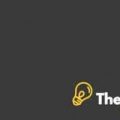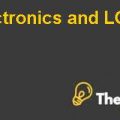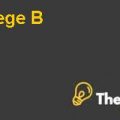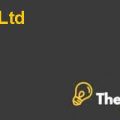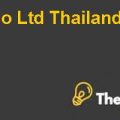
INTRODUCTION
Dell is one of the world’s two largest PC manufactures. It is based in Austin, Texas and had employed around 88,000 employees around the world. The company had used a direct model which allowed its customers to build each system on order as specified by the customer. This gave the company an advantage to sell its PCs at competitive prices. However, in July 2007, the channel strategy of the company was changed and the company announced that it would be selling its PC’s to the retail channels. This had a significant impact on the consumer base of the company. The main competitors of Dell are Acer, Hewlett Packard and Apple.
PROBLEM STATEMENT
This case presents us with the financial statements, financial ratios, comparative statements and other economic data and valuation metrics. Anthony Chan, who is one of the portfolio managers at Trinity Funds Inc, was now considering re-thinking over his investment in Dell. The stock price of Dell had fallen to US $21.73 in 2008. This was equal to the value of the share price in 2004. His team of analysts had gathered the financial data on Dell incorporation and he wanted to reassess his investment in the PC industry.
DELL’s FINANCIAL PERFORMANCE AND FINANCIAL HEALTH
All the financial information related to Dell is present in the exhibits. The ratios have been calculated for DELL for a period of five years from 2004 to 2008. These have been analyzed below:
LIQUIDITY
Apple has the highest cash to total assets ratio. The cash to total asset ratio has declined for Dell, this shows that the value of liquid assets in the company for Dell is low as compared to other PC manufacturers. The acid test ratio and the current ratio for Dell are poor; both of these ratios are lower than the standard ratio values. This shows that the company does not have enough current assets to finance its current liabilities if they fall due. Similarly, the working capital to sales ratio of the company is also poor as compared to HP. These all ratios show that the company is facing significant working capital problems. This might impact the long term performance and survival of the company.
PROFITABILITY
All the four profitability ratios show a declining performance of the company. The growth in the sales of the company has decreased significantly from 17.1% in 2004 to 6.5% in 2008; this is a very huge drop in the sales growth. The gross profit margin had decreased over the years; however, it increased in 2008 to 19.1%. Similar is the case with return on equity and a ratio of 77% shows that the company is generating a good return for its ordinary shareholders. The return on assets has also increased slightly for the company from 2007 to 2008. After HP, Dell has the highest return on assets which shows that the company is efficiently utilizing its assets to generate net income.
EFFICIENCY
The working capital ratios show a poor performance of the company. The days in receivables ratio shows that the company’s time period to collect its outstanding receivables is increasing over the years, this is because the company is not able to chase its customers to pay on time. Similar is the case with the days in inventory ratio. The time period for the company to convert the inventory into cost of goods sold is increasing. This is the reason due to which the sales of the company are deteriorating. However, the days in payables ratio seems to be under control and the company can delay its payments to the suppliers, but the company should make sure that it delays the payments to a certain extent which does not affect their relationship with the suppliers. Over all, the performance of Dell with regard to its competitors is average on all the above three ratios. On the other hand, the total asset turnover ratio seems to be constant at around 2.2 times. There seems to be no significant improvement in the efficient usage of the assets of the company, with regard to the decreasing level of sales. However, the average asset turnover is more or less similar to that of Dell in the entire PC industry.............................
This is just a sample partial case solution. Please place the order on the website to order your own originally done case solution.
In early August 2008, the Corporation Dell (Dell), seems to be in a critical moment. The Return of Michael Dell a year and a half ago has brought significant changes in the company, including a focus on the development of the market segments, the shift in the distribution of the company's strategy, as well as the emphasis on design in the product line Dell. Despite these changes, the company's share price Dell lost value after the return of Michael. Portfolio manager is trying to assess if the return of Michael Dell to Dell's CEO and a shift in the company's distribution strategy will result in the share price of the company. To support his analysis, portfolio manager has asked his team to gather comparative financial data on Dell and its main competitors. Portfolio manager wants to know if he should buy, hold or sell shares of Dell. There are three learning objectives for this case. Evaluate the financial performance of the financial statements and financial indicators, the definition of cash flow and profit drivers, and identify the determinants of the value and price of shares of "Hide
by Larry Wynant, Ken Mark Source: Richard Ivey School of Business Foundation 14 pages. Publication Date: 01 Oct 2008. Prod. #: 908N26-PDF-ENG

